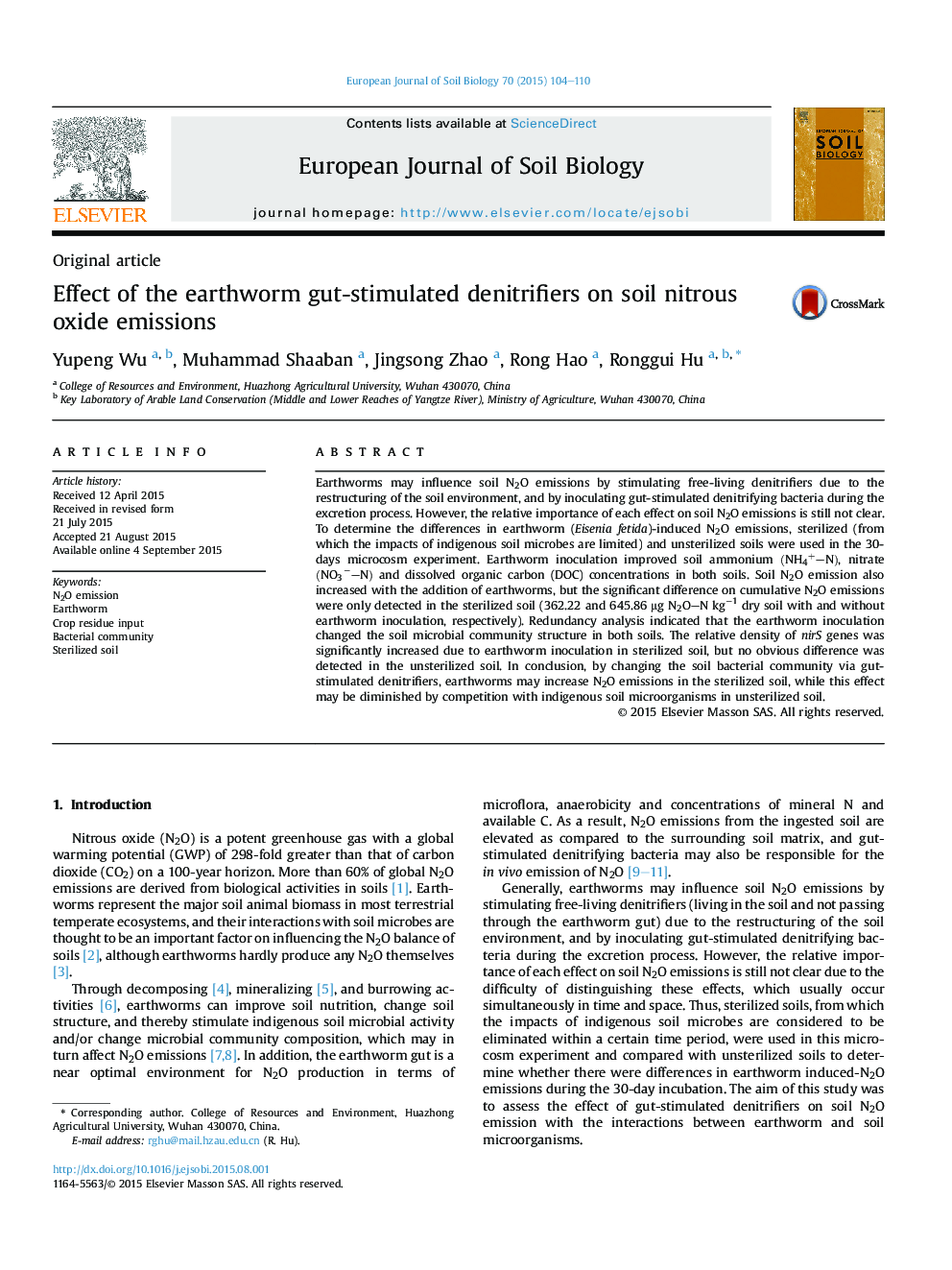| Article ID | Journal | Published Year | Pages | File Type |
|---|---|---|---|---|
| 4391742 | European Journal of Soil Biology | 2015 | 7 Pages |
•Earthworm inoculation significantly increased N2O emissions in sterilized soil.•No changes detected in N2O emissions after adding earthworms to unsterilized soil.•The abundance of nirS genes increased after addition of earthworms in sterilized soil.
Earthworms may influence soil N2O emissions by stimulating free-living denitrifiers due to the restructuring of the soil environment, and by inoculating gut-stimulated denitrifying bacteria during the excretion process. However, the relative importance of each effect on soil N2O emissions is still not clear. To determine the differences in earthworm (Eisenia fetida)-induced N2O emissions, sterilized (from which the impacts of indigenous soil microbes are limited) and unsterilized soils were used in the 30-days microcosm experiment. Earthworm inoculation improved soil ammonium (+NH4–N)(NH4+–N), nitrate (NO3−–N)(NO3−–N) and dissolved organic carbon (DOC) concentrations in both soils. Soil N2O emission also increased with the addition of earthworms, but the significant difference on cumulative N2O emissions were only detected in the sterilized soil (362.22 and 645.86 μg N2O–N kg−1 dry soil with and without earthworm inoculation, respectively). Redundancy analysis indicated that the earthworm inoculation changed the soil microbial community structure in both soils. The relative density of nirS genes was significantly increased due to earthworm inoculation in sterilized soil, but no obvious difference was detected in the unsterilized soil. In conclusion, by changing the soil bacterial community via gut-stimulated denitrifiers, earthworms may increase N2O emissions in the sterilized soil, while this effect may be diminished by competition with indigenous soil microorganisms in unsterilized soil.
